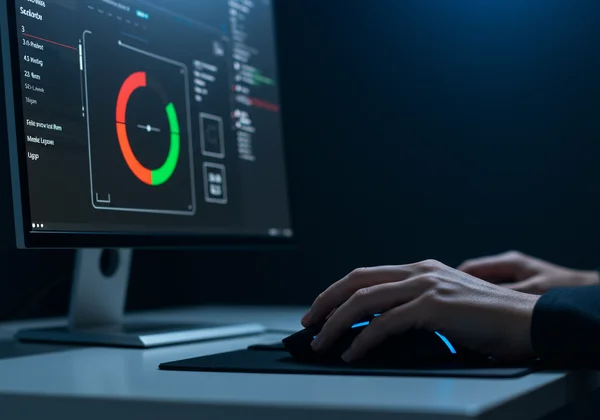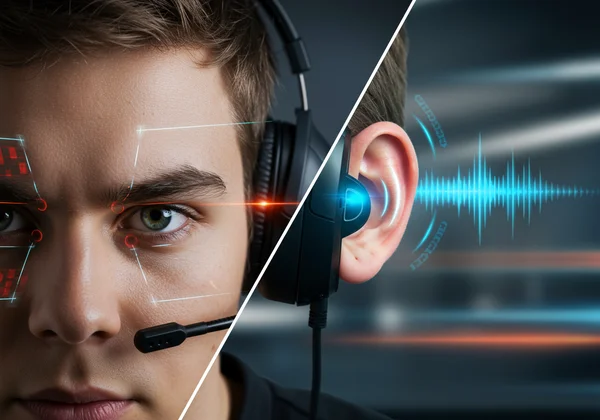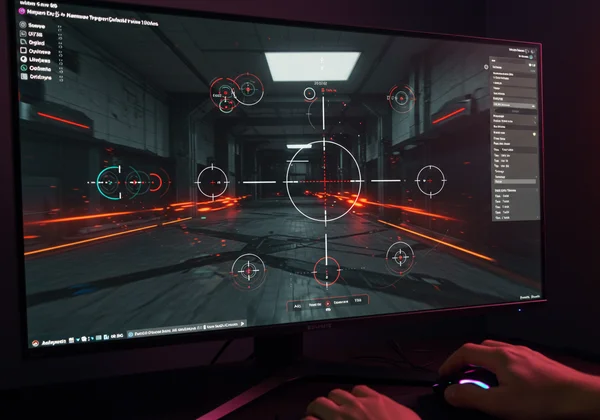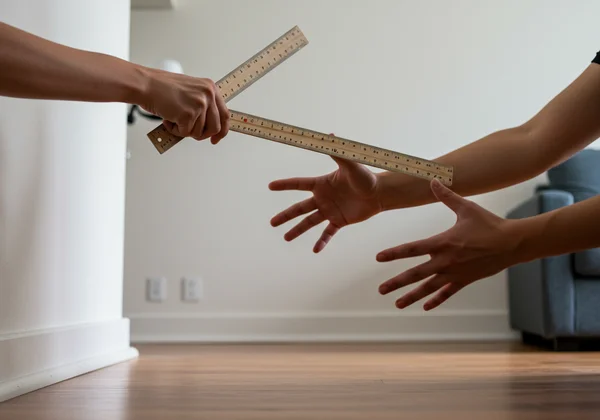Top Reaction Time Games & Tools to Boost Your Speed
Ready to sharpen your reflexes and dominate your competition? Whether you're a competitive gamer landing impossible headshots, an athlete exploding off the starting blocks, or someone keen on boosting your cognitive agility, a faster reaction time is a superpower. But the burning question is, how can I improve my reaction time for gaming and other performance-driven activities? The answer lies in consistent, targeted practice. Before you begin your training regimen, it's essential to establish a baseline. You can test your reaction time with our simple, accurate online tool to see where you stand right now.
This guide will break down the best online games, dedicated apps, and physical tools designed to make your reflexes razor-sharp. We’ll explore various methods to help you train your reaction speed, turning sluggish responses into lightning-fast actions. From digital drills to real-world exercises, this is your complete arsenal for unlocking your full potential.

Top Online Reaction Time Games & Reflex Trainers
The most accessible way to start your training is with online reaction time games and reflex trainers. These web-based tools require no downloads and offer instant feedback, making them perfect for quick, daily sessions. They are designed to isolate and drill the core components of reflex speed. The best reflex games online focus on specific stimuli, helping you build muscle memory and shorten the gap between seeing and acting.
These games are more than just a click test; they are foundational exercises. They create a controlled environment where you can focus solely on your response speed without the distractions of a complex game. By regularly engaging with these tools, you train your brain to process information faster, a skill that translates directly to high-stakes situations in gaming, sports, and even daily life, like driving.
Speed Training Challenges: Visual vs. Auditory
Your senses are the gateways for reaction. Most online trainers focus on speed training challenges: visual vs. auditory. Visual challenges are the most common. They involve responding to a change on the screen, such as a color shifting from red to green. This directly trains the visual-motor pathway used in most video games and sports. Consistently practicing these drills can significantly lower your human reaction time to visual cues.
Auditory challenges, on the other hand, train you to react to sound. Think of the starting pistol in a race or a specific audio cue in a game signaling an enemy's ultimate ability. Some specialized trainers play a sound and measure how quickly you respond. Training both visual and auditory reflexes creates a more well-rounded and resilient reaction capability, preparing you for any scenario.

Precision & Anticipation Drills Online
Once you have a handle on basic speed, the next level involves precision & anticipation drills online. Raw speed is great, but it's even better when combined with accuracy. Precision drills, often found in aim trainers, require you to click on small, rapidly moving targets. This not only tests your reaction speed but also your fine motor control, a critical skill for any FPS player.
Anticipation is a more advanced cognitive skill that these drills help develop. It’s about predicting your opponent’s next move and acting preemptively. Games that involve pattern recognition or strategic decision-making under pressure are excellent for this. By learning to anticipate, you're not just reacting; you're staying one step ahead. Start by measuring your current performance with our simple reflex test and then see how these advanced drills impact your score over time.
Dedicated Reaction Speed Training Apps & Software
For those who are serious about getting a competitive edge, using a dedicated reaction speed trainer in the form of apps and software is the next logical step. While online games are great for accessibility, specialized programs often provide deeper analytics, customizable scenarios, and structured training regimens. These tools are designed with specific goals in mind, whether it's improving your aim in Valorant or your launch time in a racing sim.
These applications allow you to track your progress with incredible detail. They can log your average reaction time, identify patterns in your performance, and highlight areas for improvement. This data-driven approach allows you to tailor your improve reaction time drills to your specific weaknesses, leading to more efficient and effective training.
Mobile Apps for On-the-Go Reflex Practice
In a fast-paced world, mobile apps for on-the-go reflex practice offer unparalleled convenience. You can squeeze in a few minutes of training while waiting for a match to load, during your commute, or anytime you have a spare moment. These apps often feature simple, engaging games like tapping tiles as they appear or responding to quick-time events.
While a mobile device's touch screen may not perfectly replicate a mouse or controller, the core benefit is consistency. Frequent, short bursts of practice keep your neural pathways primed and active. This consistent stimulation is key to making lasting improvements. For the most accurate benchmarks, however, it's best to use a desktop setup and check your speed in a controlled environment.
PC Software & Specialized Programs for Gamers
This is where the pros train. PC software & specialized programs for gamers like Aim Lab, KovaaK's, and Aimbeast offer the most comprehensive training suites available. These are not just games; they are sophisticated performance improvement tools. They provide a vast library of scenarios designed to hone every aspect of aiming and reaction, from flick shots to target tracking.
A crucial question many gamers ask is, Does FPS affect reaction time? The answer is a resounding yes. Higher monitor refresh rates (Hz) and frames per second (FPS) reduce input lag, meaning the on-screen action is closer to real-time. This specialized software allows you to train in an environment that maximizes your hardware's potential, ensuring that your reflexes, not your rig, are the limiting factor.

Physical Tools & Off-Screen Drills to Enhance Reflexes
Improving your reaction time isn't just a digital endeavor. Using physical tools & off-screen drills to enhance reflexes trains your entire neuromuscular system in a way that screen-based activities cannot. This type of training improves coordination, proprioception (your body's awareness in space), and overall physical readiness, which are invaluable for both athletes and gamers.
Physical training forces your brain and body to work together under unpredictable conditions. It builds a more robust and adaptable nervous system. By taking your practice offline, you develop a foundational level of responsiveness that will amplify the benefits of your digital training. You can monitor the real-world impact of these drills by periodically taking an online reaction test.
Physical Reflex Training Equipment Explained
There is a variety of physical reflex training equipment explained by coaches and trainers. Reaction balls, which have an uneven shape causing them to bounce erratically, are fantastic for improving hand-eye coordination and predictive speed. Another popular tool is a light training system (like Blazepods), where you must tap lights as they randomly illuminate, forcing you to move your whole body quickly and efficiently.
Even simple equipment can be highly effective. For example, boxers use a slip bag or a double-end bag to practice head movement and dodging, which is a full-body reaction drill. These tools introduce an element of unpredictability that forces your brain to adapt and respond instantly, building reflexes that are both fast and functional.
Simple At-Home Drills for Consistent Improvement
You don't need expensive equipment to get started. There are many simple at-home drills for consistent improvement. The classic ruler drop test is a perfect example: have a friend hold a ruler vertically and drop it without warning, while you try to catch it as quickly as possible. You can measure the distance it fell to calculate your reaction time.
Another great drill is simply tossing a tennis ball against a wall and catching it with one hand. To increase the difficulty, use your non-dominant hand or stand closer to the wall. These exercises are free, easy to perform, and highly effective at building the fundamental connection between your eyes, brain, and muscles. After a week of practice, discover your results online to see a measurable improvement.

Sharpen Your Reflexes: Your Path to Faster Reaction Times
Improving your reaction time is an achievable goal that pays dividends in any performance-based activity. By combining online reaction time training games, dedicated software, and physical drills, you can create a comprehensive training plan. The key is to start by understanding your current abilities.
Your journey to quicker reflexes begins with a single click. Take our free, simple, and accurate reaction time test to establish your personal benchmark. Use that score as your motivation. As you incorporate these tools and drills into your routine, come back and track your progress. Ready to unlock your speed? Try our free tool today and begin your path to faster, sharper reflexes. Let us know your score in the comments below!
Frequently Asked Questions About Reaction Time Training
How Can I Improve My Reaction Time for Gaming?
To improve your reaction time for gaming, you should adopt a multi-faceted approach. First, consistently use aim trainers and reaction time game drills to hone your mouse control and visual processing. Second, ensure your hardware is optimized—a high-refresh-rate monitor and a low-latency mouse make a significant difference. Finally, don't neglect physical wellness; proper sleep, nutrition, and hydration are crucial for peak cognitive function.
What is Considered a Good Reaction Time?
What is considered a good reaction time can vary based on the context and individual. For a simple visual stimulus, the average human reaction time is around 200-250 milliseconds (ms). However, competitive gamers and professional athletes often achieve scores below 150ms. Don't be discouraged by your initial score; the goal is personal improvement. The best way to know where you stand is to take a click test and track your progress over time.
How Often Should I Train My Reflexes?
Consistency is more important than intensity when training reflexes. Aim for short, focused sessions of 10-15 minutes every day rather than one long session per week. This regular practice helps solidify neural pathways and build lasting muscle memory. Use a simple tool like our reaction speed test to easily incorporate this daily habit and watch your scores improve consistently.